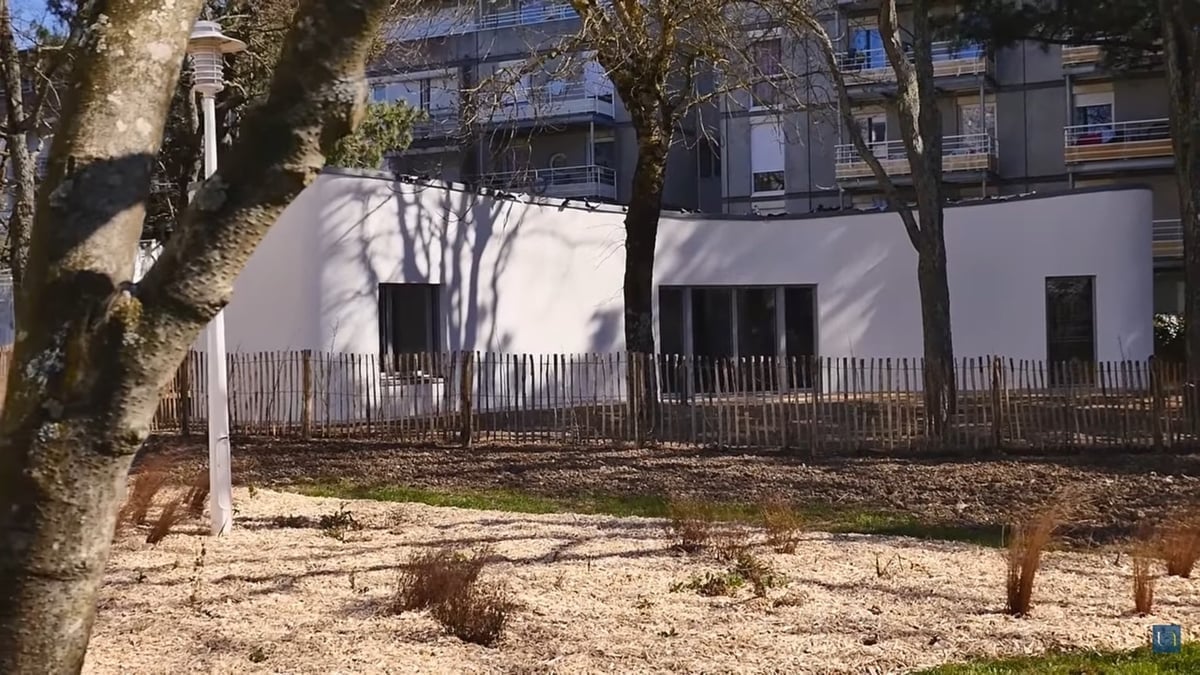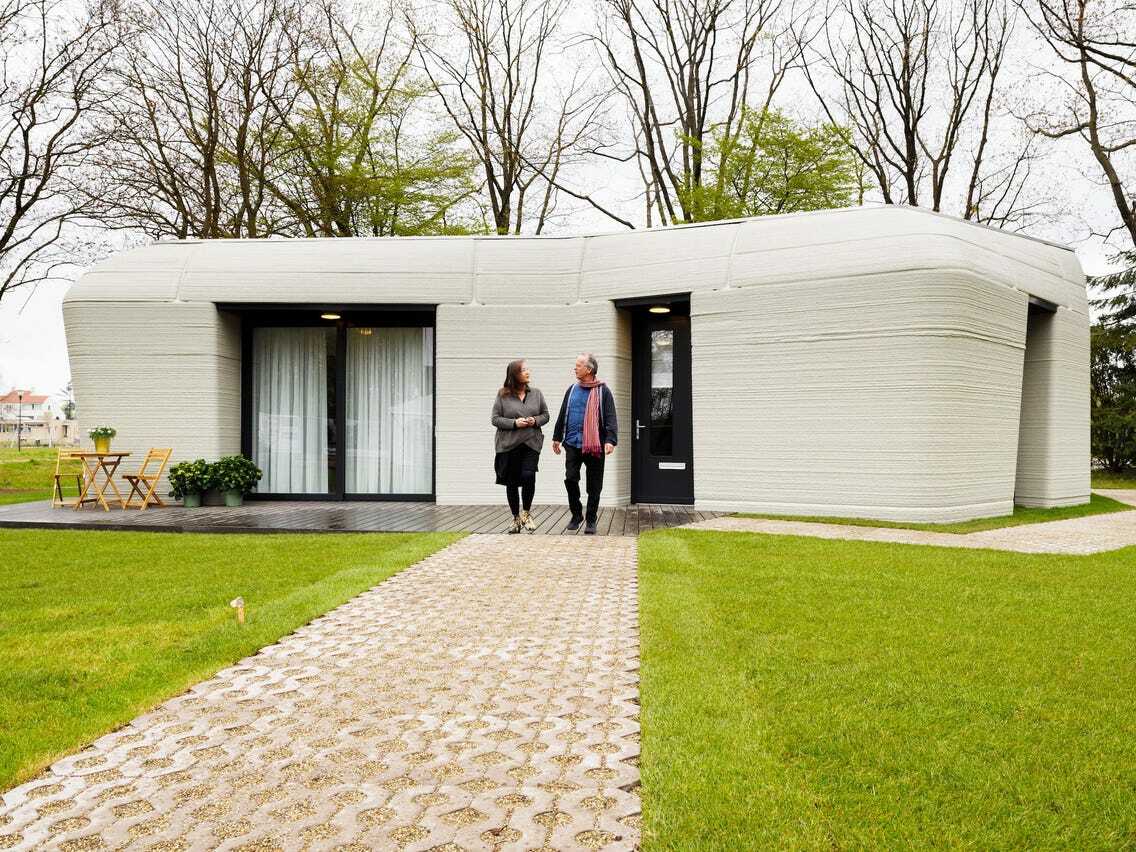Construction 3D printing has come pretty far in the past years, so much so that, these days, you even have companies dedicated to creating 3D printed structures. From 3D printed bridges in the Netherlands to office buildings in Dubai to low-income housing, there are plenty of incredible example projects.
But when it comes to houses, the question remains: When can we move in?
As it stands, there are some very promising projects around the world, but they mostly fall under the categories of prototypes, demo homes, or research projects. Only now are we starting to see these buildings come to be used.
In this article, we’ll discuss what’s significant about them before checking out a few of the projects that are actually yielding habitable homes.
Habitabilty

Generally speaking, for a 3D printed house to be habitable, it has to be built to similar standards as those constructed using conventional methods. In some cases, this has already been accomplished, with some 3D printed homes even providing better heat transfer, improved insulation, and so on.
Yet, despite what they offer, 3D printed structures still go largely uninhabited. This is largely due to the fact that construction 3D printing is still a very new technology. This means that there are a lot of kinks to work out before 3D printing can be reliably used to construct livable houses. This goes for physical as well as legal matters.
For that reason, while you do hear of 3D printed houses, they mostly exist as proofs of concept to generate awareness or get a company interested in funding further production. Otherwise, they might be part of ongoing research. Indeed, many universities are partnering with architecture, engineering, and construction firms.
All of that isn’t to say that the situation won’t change. As examples, both France and the Netherlands already have habitable 3D printed houses, but more on that later. First, we’ll take a quick look at some of the advantages and disadvantages of 3D printing houses.
Advantages and Disadvantages
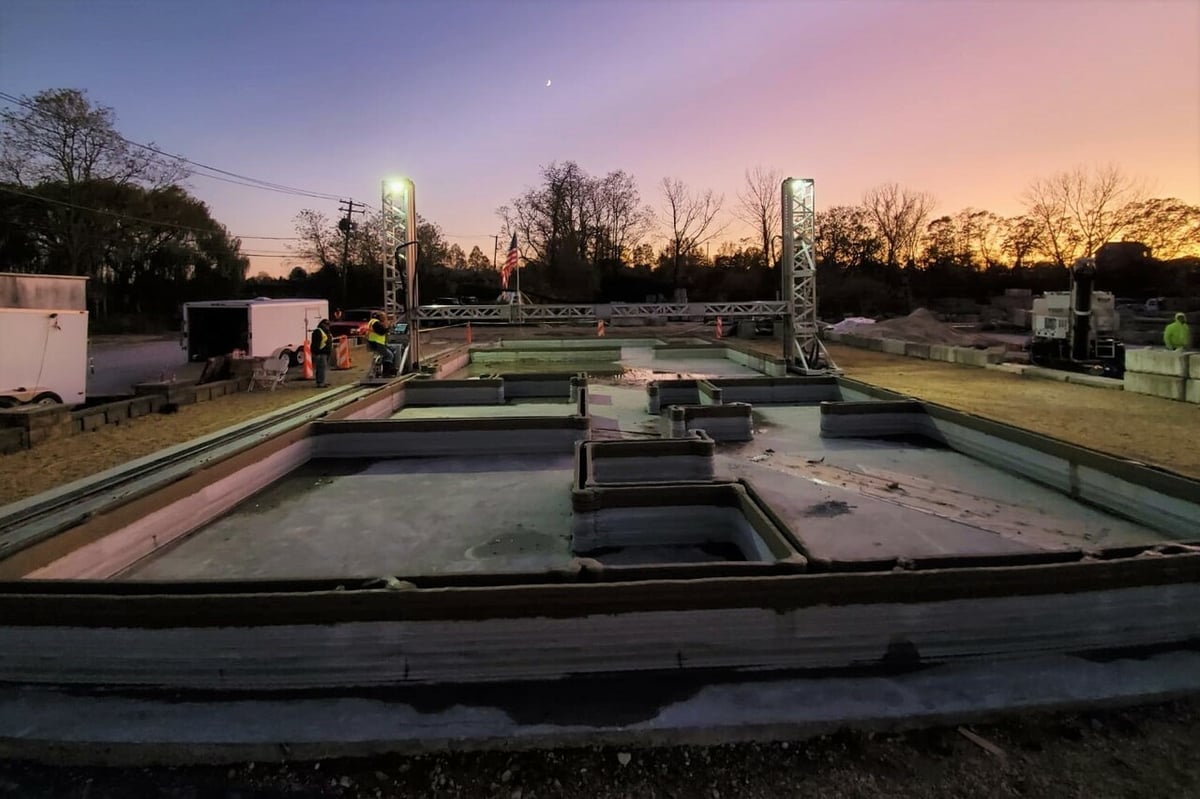
As with anything, there are advantages and disadvantages to 3D printing houses. In order to give you a bit of an idea of what they are, we’ll go over some of the most obvious pros and cons.
Pros
For starters, 3D printing is on average much faster than conventional building methods. According to COBOD, a Europe-based 3D printing construction company, their printer is up three times faster than conventional building methods. Icon, a US-based 3D printing construction company, makes a similar claim, saying their Vulcan printer is up to two times faster than conventional building methods.
Another positive thing about 3D printed houses is the fact that the final product can be significantly cheaper. However, this does heavily depend on what project you look at. Sometimes a house is between 20 to 50 percent cheaper, as is the case for the Community First! Village houses that were constructed by Icon in Texas. But in other projects, especially when looking at demo or “vanity” houses, the final price can be higher than when using conventional methods, which is the case with the Curve Appeal house designed by WATG.
The vanity projects, however, actually do feed right into another benefit of 3D printing: It’s much easier to create unique-looking objects. This is mostly because of the material used, as quick-drying cement allows for the construction of interesting geometries. It’s something that the tiny houses designed by DUS Architects in the Netherlands show perfectly.
Cons
Naturally, there are some drawbacks, as well. For example, at this point in time, no building codes exist specifically for 3D printed construction. This means the possibilities, while potentially greater than conventional building methods, are limited.
Something else worth mentioning is the fact that the technology and material options are very limited. Furthermore, they are usually proprietary to the company that built the house, like Icon’s lavacrete.
And lastly, at this moment it’s still a very new technology that’s rapidly developing. This is of course great for the industry, but it could mean that a house built a year from now has some significant improvements over what we can buy now.
Example Projects
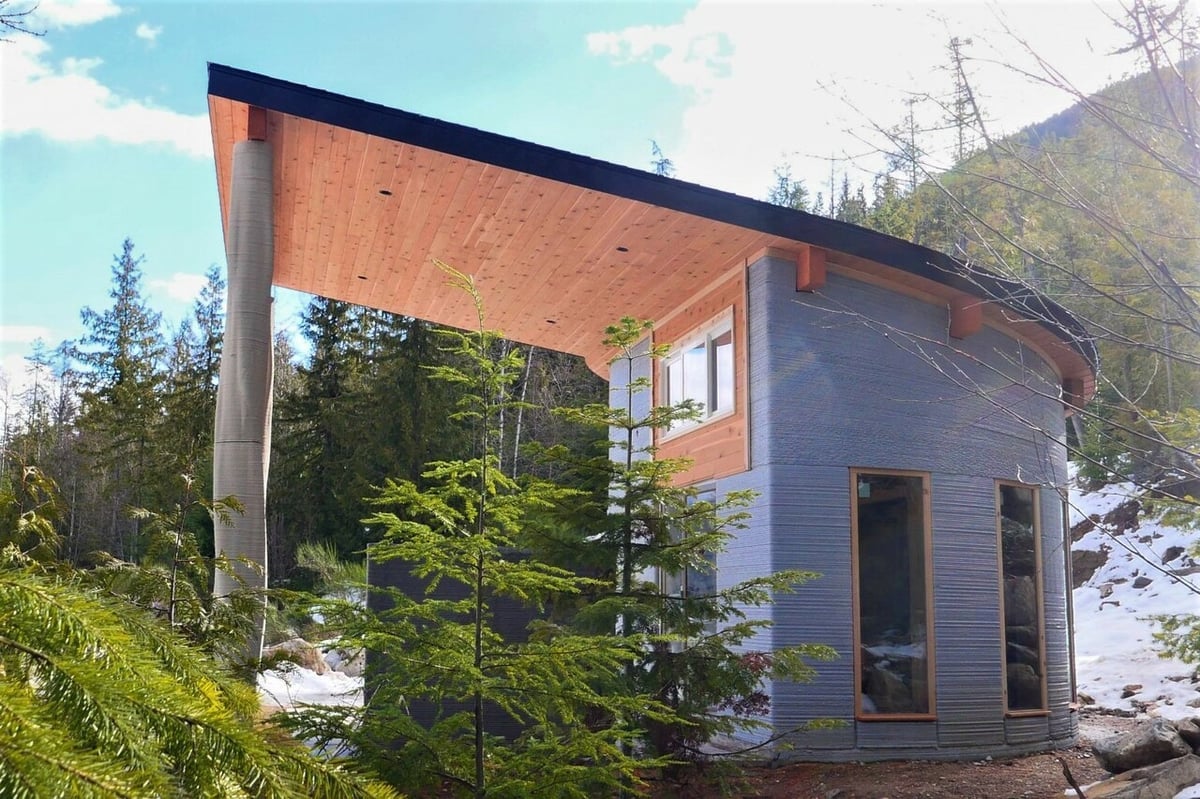
As you might have guessed, there are currently quite a few projects concerning 3D printing houses. Here we’ll discuss some of the more interesting and promising projects currently out there.
Fibonacci House
The recently completed (2020) Fibonacci house was designed by the Netherlands-based Twente Additive Manufacturing (TAM). 20 separate components were printed off-site to facilitate transportation. Currently, it’s available on Airbnb for $113 a night. So if you’re ever in Procter, British Columbia, you could book a stay in a 3D printed house!
17th Street Residences
In 2019, Icon built seven houses at Community First! Village in order to provide housing for the local homeless population. But now Icon has set its sights on the residential housing market with the so-called East 17th Street Residences. The houses range in size from approximately 1,000 to 1,500 square feet and feature a flexible floorplan, largely thanks to the 3D printed construction. They are currently for sale with a starting price of $450,000, which isn’t cheap, but it’s still $100,000 less than the average property price in Austin.
Currently, two of the houses have already been sold and are being built, although it isn’t quite clear when their new owners can move in.
Social Housing in Nantes
Over in Europe, 3D printed housing has been taking off as well, with the first two inhabited projects located in France and the Netherlands.
Let’s first take a look at France’s 3D printed house, which was designed by the University of Nantes in collaboration with the Nantes city council. It’s 1,022 square feet, features four bedrooms, and a large central space.
The structure, called the Yhnova House, has no price tag as it’s part of a social housing program as well as a larger research project. Indeed, in this case, 3D printing is being seen as a way of revitalizing social housing in France.
The project was finished in 2017, and a family moved in in 2018, making the Yhnova House the first inhabited 3D printed house in Europe.
Boulder House in the Netherlands
And now for the house in the Netherlands. The house in Eindhoven is seen by some as the “true” first inhabited 3D printed house in Europe, as it’s neither a prototype nor part of a research project. However, this isn’t entirely accurate as the house is being closely monitored to see how it holds up, and whether anything should be done differently the next time around.
The house, part of Project Milestone, is the first of five to be built. Modeled after a boulder, it took approximately 120 hours to build and features two bedrooms and one bathroom. It also has some high-tech features, such as a digital door lock.
The house is available for rent at around €800 per month through Vesteda, a Dutch online real estate platform. The first tenants, Elize Lutz and Harrie Dekkers, received the keys in April and are supposed to have moved in this month.
The Global Housing Crisis

If you’re human and alive, you’ve probably noticed that there’s something of a crisis going on around the world when it comes to housing. Whether it’s the skyrocketing prices in many cities or the general lack of habitable buildings in Africa’s growing metropolises, people everywhere are challenged to find safe and affordable housing.
As alluded to with the Yhnova, 3D printing is seen by many as a solution to the housing problem. And it’s not just France making moves.
For example, in the Community First! Village in Texas, Icon built six 400-sq-ft homes and a 500 sq-ft welcome center. The Community First! Village is a first-of-its-kind project; it’s a response to the ever-increasing homeless population around Houston, Texas by providing some folks with permanent housing.
But Africa in particular sees it as a way of improving living conditions on the continent. With the dramatic urbanization in recent years, Africa’s housing supply simply can’t keep up with the demand. That’s where 3D printing comes in. Some of these houses are built in 12 hours and have a price of less than $10,000. A great example comes from 14Trees, a joint venture of two companies that are in the process of printing houses in Malawi at the aforementioned cost and have already delivered their first one.
Another company that has the potential of going a long way in combatting the global housing crisis is WASP (World’s Advanced Saving Project). Currently, it appears to mostly be in a prototyping phase, but that doesn’t take away from its potential. The primary reason this project could be a gamechanger is the fact that they use locally sourced clay to print the houses. (Most of the other 3D printed houses use a proprietary concrete mix.) We can’t speak to the success of the WASP house at this point, but it’s still very promising.
Final Thoughts
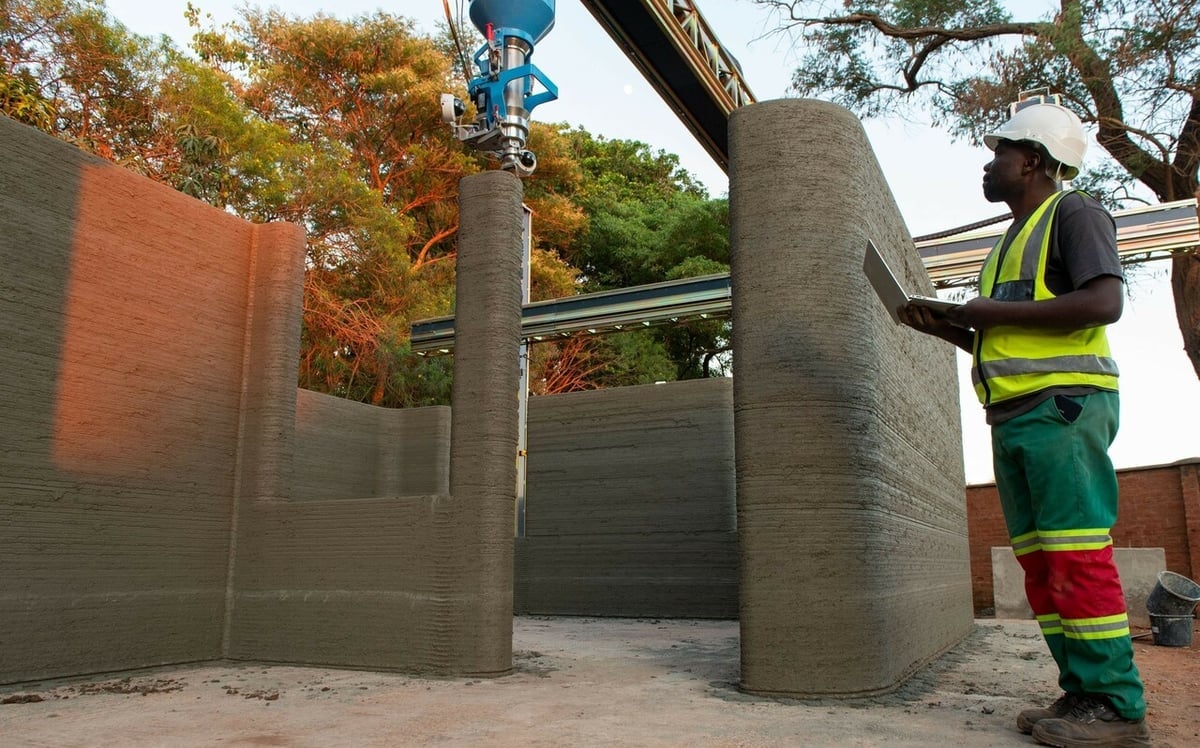
3D printing in construction is a promising but very new technology. Circling back to our question of when can we move in, technically speaking, the answer is now!
If you look at the projects in Eindhoven, the Netherlands, the first of five 3D printed houses is already being lived in by a couple. Houses are being built by Icon in the U.S. and sold below market value, thanks to the money saved in construction. But comparatively, this is all at a very small scale, so the true extent of what 3D printed construction is capable of remains to be seen.
Lead image source: Fast Company
License: The text of "3D Printed Houses for Sale: When Can We Move In?" by All3DP is licensed under a Creative Commons Attribution 4.0 International License.


